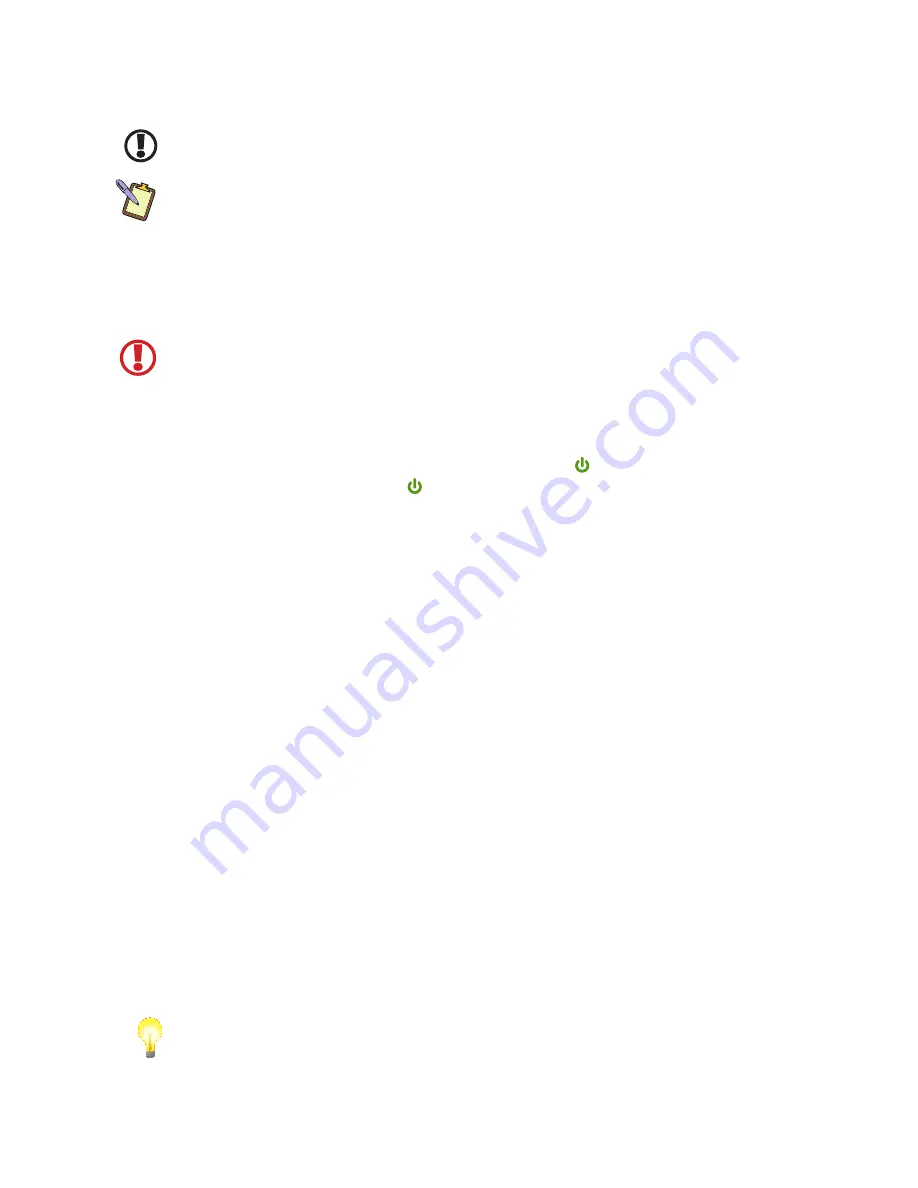
Step 2: Connect the Sahara NetSlate to an External Power Source
Locate the AC adapter and the power cord. Plug the power cord securely into the AC adapter.
Plug the AC adapter’s connection cable into the “DC In” port on the top of the Sahara NetSlate.
Once the adapter plug is securely in place, plug the power cord into an external power socket.
IMPORTANT:
You should allow the battery to charge fully before disconnecting the Sahara
NetSlate and running it on battery power for the first time.
NOTE:
When you first connect the Sahara NetSlate into an external power source, the battery
charge indicator will begin to glow amber. When the battery is fully charged the indicator will
turn green. See the chapter
Battery Usage and Care
in the User’s Guide for tips on maximizing
battery life.
Step 3: Connect Applicable Peripherals
If you would like to use any external peripherals with your Sahara NetSlate (i.e. USB mouse,
USB keyboard, etc.), you should connect them now.
IMPORTANT:
When you power on the Sahara NetSlate for the first time, you will need to have
an external USB keyboard connected in order to complete the Windows XP Professional and
Windows 7 Professional welcome screens. A mouse is not necessary as the touch screen should
be functional.
Step 4: Power on the Sahara NetSlate
Locate the three power switches on the top on the tablet. The switch is the computer’s
main power toggle. Slide it toward the icon and hold it there until it emits a blue glow
(about 1-2 seconds) and then release it. The system will now boot up.
Step 5: Complete the Operating System Installation
When your system powers on for the first time, you will be prompted to enter your product
key to complete set-up (
Windows 7 only
). The key can be found on the C.O.A. sticker located
on the back of the system.
Windows (
all versions
) will then have a few questions for you to answer in order to localize
and finish your installation. Refer to your operating system’s manual for information on any of
the questions you are unsure how to answer. When done, you will be taken to the Windows
desktop (
Windows 7 will continue optimizing and updating your system and may restart
).
Step 6: Navigating with the Touch Screen
Unlike a standard laptop or desktop PC, common navigational activities on a Tablet PC are
completed using the stylus pen, or even your fingers. Navigating with a touch screen is
different from navigating with a mouse. The pen will interact with the computer whenever
you touch it to the screen.
Hold the stylus pen as if you were writing with a standard pen. Instead of sliding the pen
around the screen, just tap on what you want to interact with. Sliding the pen while lightly
touching the tip to the screen will move the on-screen pointer around as if you were using a
mouse and holding down the left mouse button. In other words, you would be performing
what is known as a drag operation.
Also, remember that since the screen is sensitive to the touch, resting your hand on the screen
while using the pen might make the pointer react unpredictably.
TIP: When trying to select or activate something on the screen with the stylus pen, pay
attention to the position of the pointer icon instead of the tip of the pen.
Tapping lightly on the screen will perform a standard left mouse button click. Holding the
tip of the pen against the screen without moving it for about a second or so will perform a
standard right mouse button click.


























